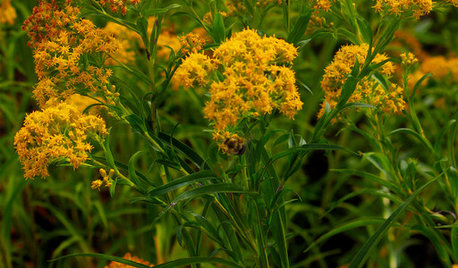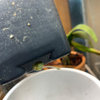Help rooting Harison's Yellow?
EmilySarah
11 years ago
Related Stories

FLOWERS AND PLANTSThis Sunny Yellow Flower Helps Fall Pollinators and Landscapes
Oligoneuron riddellii’s distinct grass-like leaves and bright flowers jazz up the garden in the upper Midwest and Central Plains
Full Story
ARCHITECTURERoots of Style: The Eclectic American Foursquare
The turn-of-the-20th-century style transitioned U.S. residential architecture from the Victorian era to the modern age
Full Story
ARCHITECTURERoots of Style: Origins and Interpretations of the Bungalow
Bungalows translate effortlessly across continents and cultures to adapt comfortably to many styles and regions
Full Story
MODERN HOMESHouzz Tour: A Modern Home Rooted in Its Place
It's partially buried in the earth, but with a cantilevered roof and strong colors, this Ottawa home is anything but shy
Full Story
HOUZZ TOURSMy Houzz: A Northwest Home Honors Its Midcentury Roots
A couple embrace Scandinavian modern to preserve the integrity of their home, built by midcentury architect Kenneth Brooks
Full Story
COLORPick-a-Paint Help: How to Create a Whole-House Color Palette
Don't be daunted. With these strategies, building a cohesive palette for your entire home is less difficult than it seems
Full Story
PETS6 Ways to Help Your Dog and Landscape Play Nicely Together
Keep your prized plantings intact and your dog happy too, with this wisdom from an expert gardener and dog guardian
Full Story
REMODELING GUIDESWisdom to Help Your Relationship Survive a Remodel
Spend less time patching up partnerships and more time spackling and sanding with this insight from a Houzz remodeling survey
Full Story
LIFE12 Effective Strategies to Help You Sleep
End the nightmare of tossing and turning at bedtime with these tips for letting go and drifting off
Full Story
SELLING YOUR HOUSE5 Savvy Fixes to Help Your Home Sell
Get the maximum return on your spruce-up dollars by putting your money in the areas buyers care most about
Full Story






t_bred
donaldvancouver
Related Professionals
Edmond Landscape Architects & Landscape Designers · New Bedford Landscape Architects & Landscape Designers · Birmingham Landscape Architects & Landscape Designers · Garden City Landscape Architects & Landscape Designers · Grand Haven Landscape Architects & Landscape Designers · Canton Landscape Contractors · Broadlands Landscape Contractors · Cerritos Landscape Contractors · Federal Way Landscape Contractors · Fort Payne Landscape Contractors · Golden Landscape Contractors · Melrose Landscape Contractors · San Antonio Landscape Contractors · Tacoma Landscape Contractors · La Jolla Roofing & Guttersgenerator_00
generator_00
bejoy2
bejoy2
EmilySarahOriginal Author
EmilySarahOriginal Author
mad_gallica (z5 Eastern NY)
generator_00
EmilySarahOriginal Author